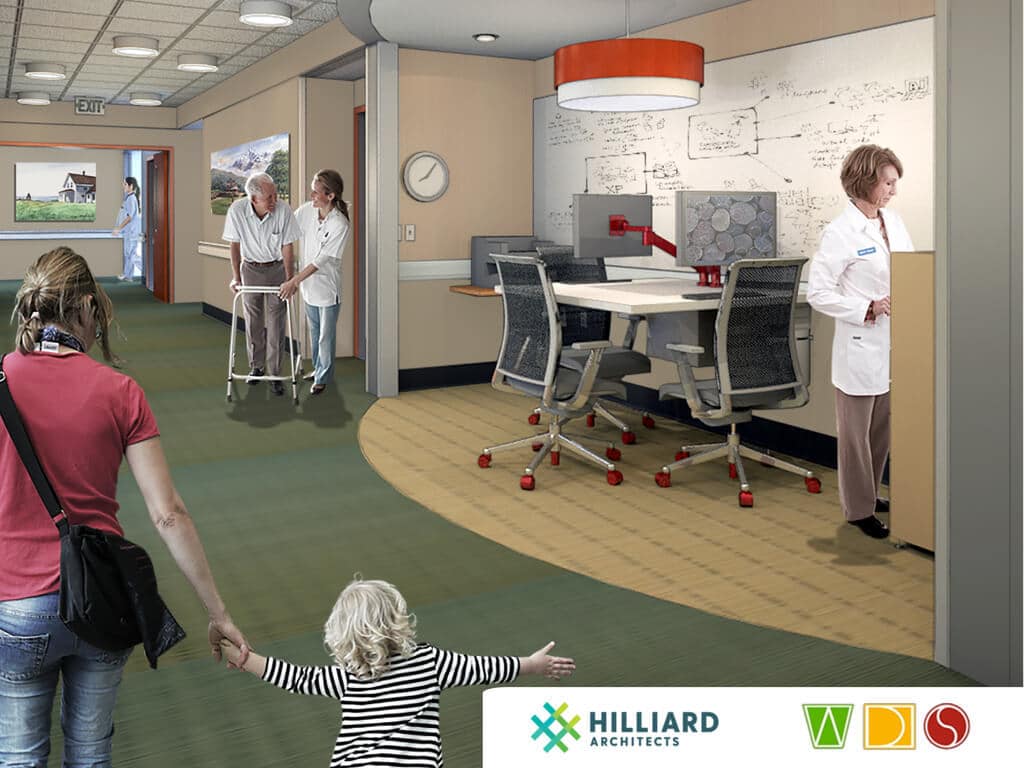Blog
The Value of Time
 Evidence-based design (EBD) has become one of the fastest growing trends in healthcare development and design. Why? Because it incorporates design techniques that add tremendous value to the outcome of the patients, their experience, the hospital staff, and the hospital administration’s bottom line. In this particular case, the value is time.
Evidence-based design (EBD) has become one of the fastest growing trends in healthcare development and design. Why? Because it incorporates design techniques that add tremendous value to the outcome of the patients, their experience, the hospital staff, and the hospital administration’s bottom line. In this particular case, the value is time.
The Value of Time
Life as a patient, life as a patient’s loved one, or life as a nurse or doctor… No matter the perspective, time is arguably the most important thing to everyone.
A recent study showed that only 27% of a nurse’s or doctor’s day was spent in front of a patient. Divide that by the number of patients each healthcare provider must see each day, and that is the amount of time one can expect is being spent with a particular patient.
Recently, the Sacramento VA Medical Center called on Hilliard Architects Inc. and Wikoff Design Studio to redesign their 4th floor in a manner that would increase the provider’s time spent with patients by 70%.
Design Techniques that Improve Time
To increase the time spent with patients, the expert design team incorporated EBD techniques that improve the workflow of the staff. Healthcare professionals are some of the hardest working individuals in the workforce. It’s troubling to note that most of their time is spent walking back and forth to the nurses’ station to chart and consult with other staff, the pharmacy to place and pick up patients’ meds, then to the supply room. In between, they need to be available to check in with families.
Choosing to incorporate EBD techniques in the redesign is the only way to improve time. The EBD techniques such as Decentralized Nurses Stations prevents nurses and doctors from double-backing between patient rooms, the pharmacy and the work area to chart. The outcome is more time spent with patients and a higher quality of care.
Decentralized Nurses Stations
To allow caregivers more time to spend with their patients, Hilliard and Wikoff proposed an Evidence Based Design (EBD) technique called Decentralized Nurses Stations.
A Decentralized Nurse Station is a small, private work area located right outside of a patient’s room. The decentralized work area keeps staff near the patient.
Medications, Supplies and Privacy
Improving the face-time by 70% meant that the design team needed to take the design even further by equipping the decentralized nurse stations with:
- Pyxix Medication Dispensing System
- Clean and Soiled Storage Area
- A Small Conference Table
The extra additions ensure that all necessary supplies and medications are close to the patients. The conference table offers a private space for nurses and doctors to consult with family members while maintaining sightlines to patient room.
Unveiling the New Design
The new design will be revealed at the end of next month. The entire administration and design team is eager to unveil their new approach which will increase the time spent with patients by 70%. The redesign is a perfect example of the Sacramento VA’s mission of patient-centered care.







